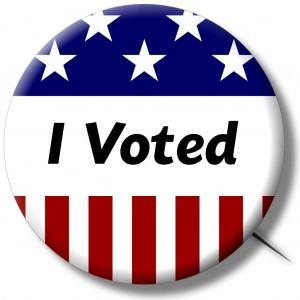 It’s likely that on Nov. 2, 2010, you saw a banner ad on Facebook, reminding you that it was Election Day. And it’s extremely likely that when you saw that message, you also saw profile pictures of your “friends” who had clicked Facebook’s “I Voted” button. You were supposed to — it was a science experiment.
It’s likely that on Nov. 2, 2010, you saw a banner ad on Facebook, reminding you that it was Election Day. And it’s extremely likely that when you saw that message, you also saw profile pictures of your “friends” who had clicked Facebook’s “I Voted” button. You were supposed to — it was a science experiment.
Earlier this week, Nature published the study, A 61-million-person experiment in social influence and political mobilization, revealing the intricacies of the study, which was designed to gauge social pressures on voter turnout. And it turns out, the Facebook banner ad, which was seen by millions of people had a real effect on voter turnout, to the tune of about 300,000 additional voters. Smithsonian Magazine published an article on its website Wednesday that spells out how the experiment worked:
Unbeknownst to users, though, Facebook tailored the banner message specifically to enable a massive real-world social experiment, as part of a collaboration with researchers from the University of California, San Diego. One percent of the sample—about 600,000 people—saw a similar message, but without the photos of their friends who’d already clicked the “I Voted” button. Another 600,000, serving as a control group, saw no voting message at all.
Scientists double-checked the validity of self-reporting using the “I Voted” button by cross-referencing Facebook user accounts with voting records and found that roughly 340,000 people who would not have otherwise voted made their way to the polls during the midterm election. Smithsonian breaks down just what the findings entail:
Once the Facebook accounts were matched with voting registries, the researchers mined the data. What they found was fascinating: Users who saw the full banner message with their friends’ photos included (which the researchers called a “social message”) were 0.39 percent more likely to vote than those who saw no message. When compared with users who saw the banner message without their friends’ photos included (which the researchers called a “informational message”), users who saw the “social message” were still 0.39 percent more likely to vote.
Let’s just hope Facebook doesn’t use its power for evil…